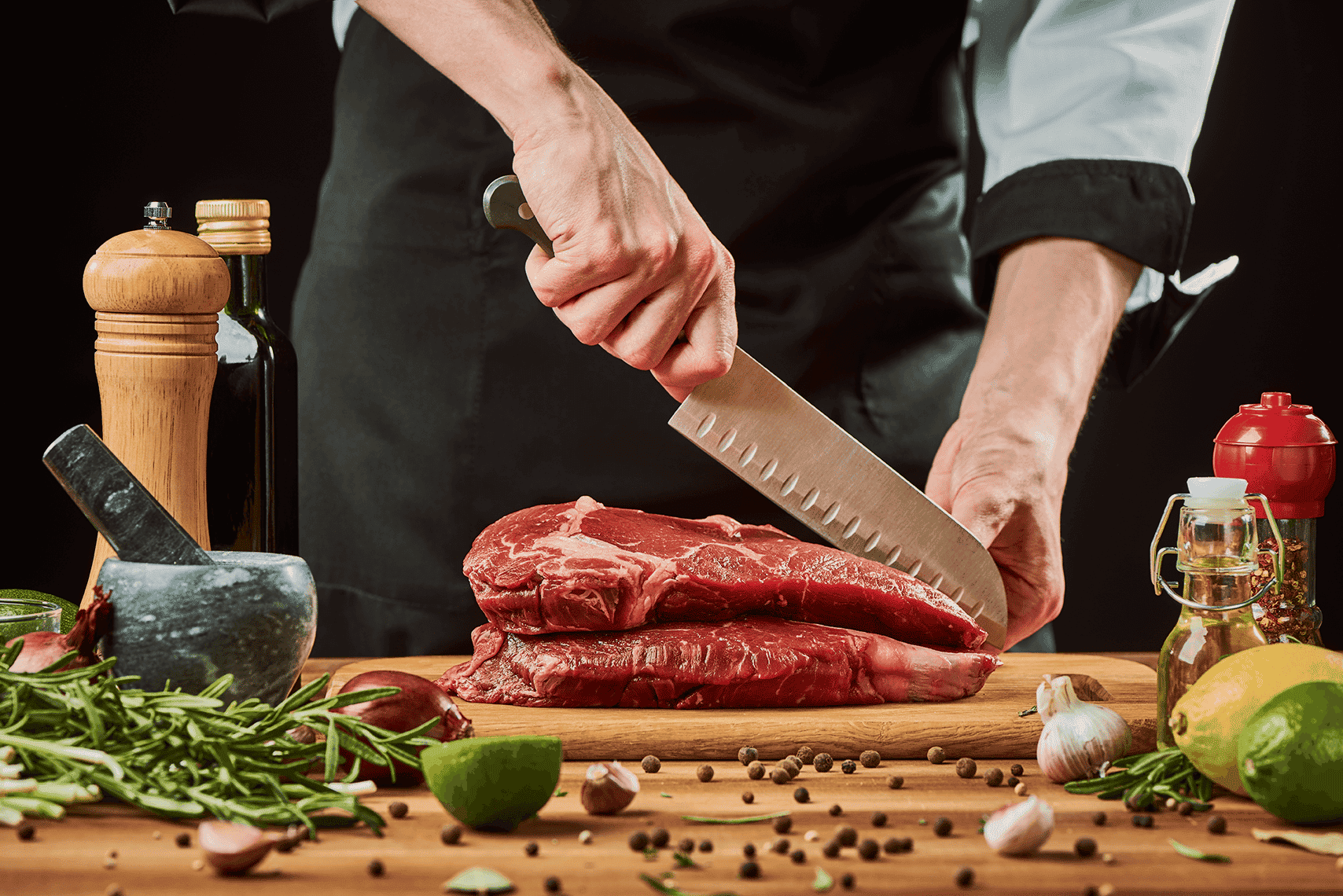
Be it a housekeeper or anyone living on their own, everyone has to cook not only as a daily necessity but for the refreshment of the soul as well. In order to accomplish that, it’s crucial to use the right knife that suits the cook.
Santoku knives are often regarded as the ideal knife for general use cases. Can you use Santoku knife to cut meat? Let’s find out.
Santoku knives are great for cutting meat. Its lightweight and sharp blade structure make it very convenient to cut boneless meat, fish, and vegetables. But keep in mind, that hard bones can cause damage to its blade as it is brittle due to their thin feature.
It also needs care and maintenance now and then to keep the blade sharp and running.
Santoku knife is specially designed to be thin and short. Its length usually ranges from 5 inches to 7 inches. The blade is flat and only sharpened on one side. It doesn’t have any pointed tip. And it contains no bolster. That’s why it’s light and easy to balance.
The Santoku knife is becoming more popular every day in the world. Due to its popularity, Santoku knives are being made in countries besides Japan such as the USA, Europe, and Vietnam.
How to cut Meat using Santoku Knife (Step by Step Guide):
- Take a wooden chopping board.
- Hold the knife horizontally to the board on top of the meat.
- Push the knife down with smooth motion and enough pressure so it barely makes contact with the board.
How to take care of Santoku knife:
- Don’t apply too much pressure on the knife.
- Don’t cut hard bones.
- Don’t cut frozen foods.
- Don’t cut acidic foods such as lemons and tomatoes as it can react with the blade.
- Don’t let it make contact with utensils.
- Hand washes the knife after using it and quickly dry it to prevent the blade from getting rust.
- Only sharpen the blade with a Japanese whetstone.
Cutting meat with a Santoku knife is easy and also time efficient. It’s not designed for specific tasks such as Sashimi for fish or pruning vegetables. But for daily use in households, the Santoku knife is an ideal choice.
Is There a Better Alternative to Cutting Meat?
The only widely used competitor for the Santoku knife is its western counterpart Chef’s knife. A chef’s knife is a comparatively heavier knife that provides a good balance for the “cutting down” motion. Its blade has a curved edge and a pointer tip. It’s sharpened on both sides. Its length ranges from 4 inches to 12 inches.
The average Santoku knife’s edge is a 10-degree angle, while chef’s knives are 15-degree angles per side on average totaling a 30-degree angle. For this reason, the Santoku knife is sharper than Chef’s knife.
When it comes down to basic comparison, the Santoku knife is sharper and faster due to it being softer. So it can cut through meat and other soft items faster than a Chef’s knife while the Chef’s knife can cut through comparatively harder foods.
Practically in households, hard items are no longer being required to cut these days. For example, people can buy boneless meat straight from the store. So in that case, the Santoku knife is the best choice among these two.
Though admittingly, the Santoku knife needs more care than a traditional Chef’s knife, it makes the daily cooking process much more convenient and bearable.
Also due to its smaller size, it’s much easier to handle for people with smaller hands. So switching to a Santoku knife now would be a very smart choice and it’ll make cooking much easier for many people.